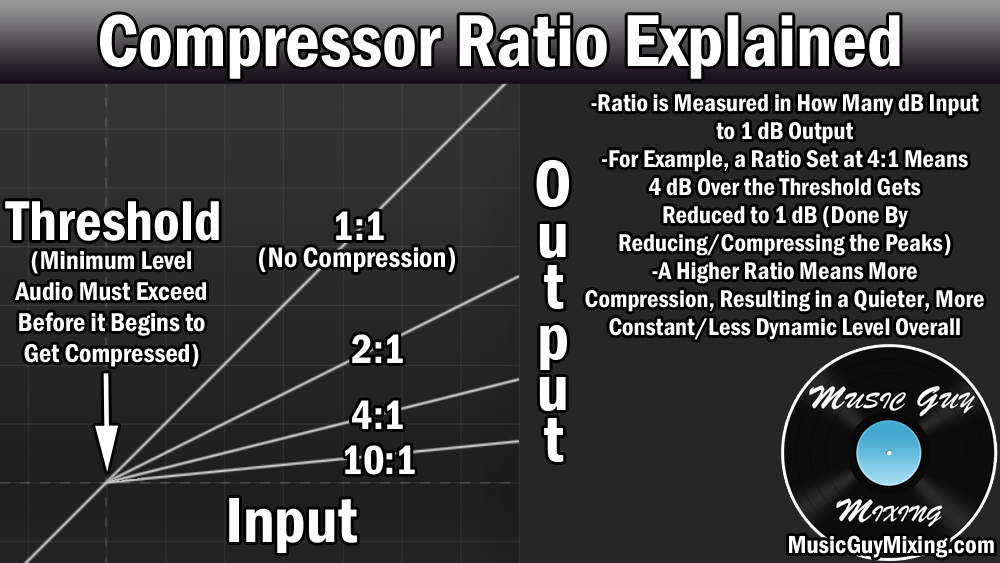Limiter vs compressor. They both relate to the dynamics of your audio. They even, depending on the exact hardware or software, share a lot of the same settings. Let’s compare limiter vs compressor and answer the question of whether they’re the same or how they differ, not to mention when to use each.
Limiter Vs Compressor

Compressor
Let’s begin with the compressor.
As I identified in my overview of what is an audio compressor, this is a tool which is designed to reduce peaks in a clip of audio, thereby reducing its dynamic range.
Compression reduces the dynamic range in order to achieve a more consistent average volume from a track. This helps that track fit in better in the context of the mix, creates more energy for that track, and keeps that track more up front in the mix.
Pictured here is FabFilter’s Pro-C compressor. Compared to a limiter, its settings are a bit more involved:

While a limiter and compressor share a lot of the same features, the major difference between a limiter vs a compressor is that the ratio at which the peaks are turned down on a track is much lower on a compressor.
While you can adjust it, typically with a compressor you want to use a lower ratio (see my overview on the compressor ratio explained), something more in the realm of 2:1 to 10:1.
I say “lower” relative to the ratio on a limiter which I’ll mention in a moment.
These ratios pull down peaks to reduce dynamic range, but they don’t flatten out/eradicate peaks entirely.
As you can see, a higher ratio results in more compression, resulting in less output volume:

Keep raising the ratio and eventually you get a flat line for the output to where everything is turned down to the threshold itself. When the ratio gets to that point, that threshold becomes a hard ceiling.
This is the principle of limiting and how limiters work.
Limiter
A limiter gets its name from the idea that its threshold creates that hard ceiling which literally limits how loud those peaks can go.

In the case of FabFilter’s Pro-L limiter, everything and anything which is above/louder than the gain/threshold is flattened out via an infinite ratio. This reduces the gain as much as necessary to keep that ceiling intact.
The output gain is automatically made up to max out the overall volume to hit 0 decibels true peak (though this can be manually brought back down with the output gain control in the bottom right.
As I covered in my overview of what is a limiter, limiters have two primary uses.
The first is in the audio mastering stage. Getting the master as loud as possible without causing any degradation to the audio is one of the primary goals of mastering.
Maximizers or limiters are used to push the gain up, sacrificing some peaks to achieve more LUFS or average volume while preventing audio clipping.
On the other hand, limiters can also be useful in the mixing stage – not for maximizing the volume of a track but for minimizing the dynamics.
When you want to ensure a track is consistent and front and center in the mix, a limiter can be used in place of a compressor to essentially make the entire track the exact same volume.
This happens more often than you realize, particularly in certain genres like pop where natural dynamics are typically eschewed for that in your face sound. It’s not uncommon for mixing engineers to limit bass, kick, snare, even vocals to ensure there’s no dropoff from one hit or note to the next.
Make sure you add a little attack when using a limiter for this purpose in particular. This delays the smashing of those peaks for a split second, allowing the high frequency audio transients to punch through before the limiter yanks them down, creating a punchier track and mix.
Also be sure to turn the output gain down manually after you’ve reduced the dynamics to taste as the aim isn’t to make the tracks in your mix loud.
Dropping the output gain manually allows you to maintain gain staging which is important for keeping the sum on the master fader down, not to mention feeding a better level into the next plugin in the processing chain for that track. See my gain staging cheat sheet for tips on that.
Is a Limiter a Compressor?
To tie up what I’ve been alluding to throughout this limiter vs compressor comparison, a limiter IS a type of compressor, albeit one with a fixed infinite ratio.
When you want to max out the volume for a master while preventing clipping, or you want to remove the dynamics from a track to keep that track constant in the mix, a limiter is a very useful plugin.
Conversely, compressors offer you a lot more options in terms of managing the dynamics of your audio given the versatility of the ratio knob.
You can go with a more aggressive 8:1 to achieve a more average and consistent volume while maintaining some dynamics and peaks in your audio.
Alternatively, you can keep the ratio to a relatively more average or lighter 4:1 or 2:1 to more transparently smooth out the peaks of your track and provide a little cohesion and glue (ahem, glue compression, anyone?)
Both tools have their purposes and tasks they’re better suited for, and I cover all of the best uses in our dedicated compression category here on Music Guy Mixing, so refer to that for dozens of detailed guides on each.
